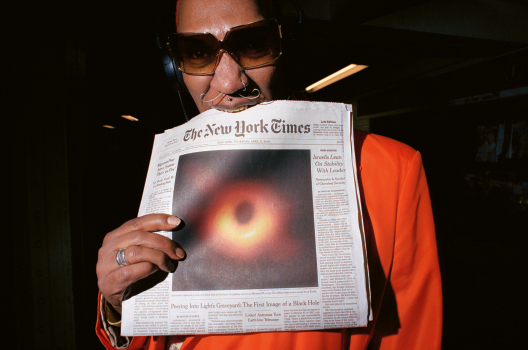Une histoire culturelle de la sublime première image d’un trou noir, en photographies et documents.
«Peering into Light’s Graveyard: The First Image of the Black Hole», lisez l’article de couverture du New York Times du 11 avril. Le titre, comme beaucoup d’autres ce jour-là, était accompagné d’une image d’un anneau céleste brillant encadré par une noirceur infinie: la première image d’un trou noir. Dans son premier livre, le photographe new-yorkais Matthew Beck (né en 1986) se concentre sur le dévoilement de cette image jusqu’alors invisible en la suivant dans les profondeurs du métro de New York.
Le livre suggère l’idée que le cosmos n’est pas quelque chose à observer simplement de notre point de vue en tant qu’humains, mais plutôt un système dont nous faisons intrinsèquement partie; et la vraie nature du trou noir semble aussi insaisissable que la réponse à la question la plus pressante de l’humanité: «pourquoi».
A cultural history of the sublime first image of a black hole, in photographs and documents.
“Peering into Light’s Graveyard: The First Image of the Black Hole,” read the New York Times’ April 11 cover story. The headline, like many others that day, was accompanied by an image of a glowing celestial ring framed by infinite blackness: the first image of a black hole. In his first book, New York photographer Matthew Beck (born 1986) focuses on the unveiling of this previously unseeable image by following it into the depths of the New York City subway.
The book suggests the notion that the cosmos is not something to simply be observed from our vantage point as humans, but more a system that we are intrinsically a part of; and the true nature of the black hole seems to be as elusive as the answer to humanity’s most pressing question of “why.”





